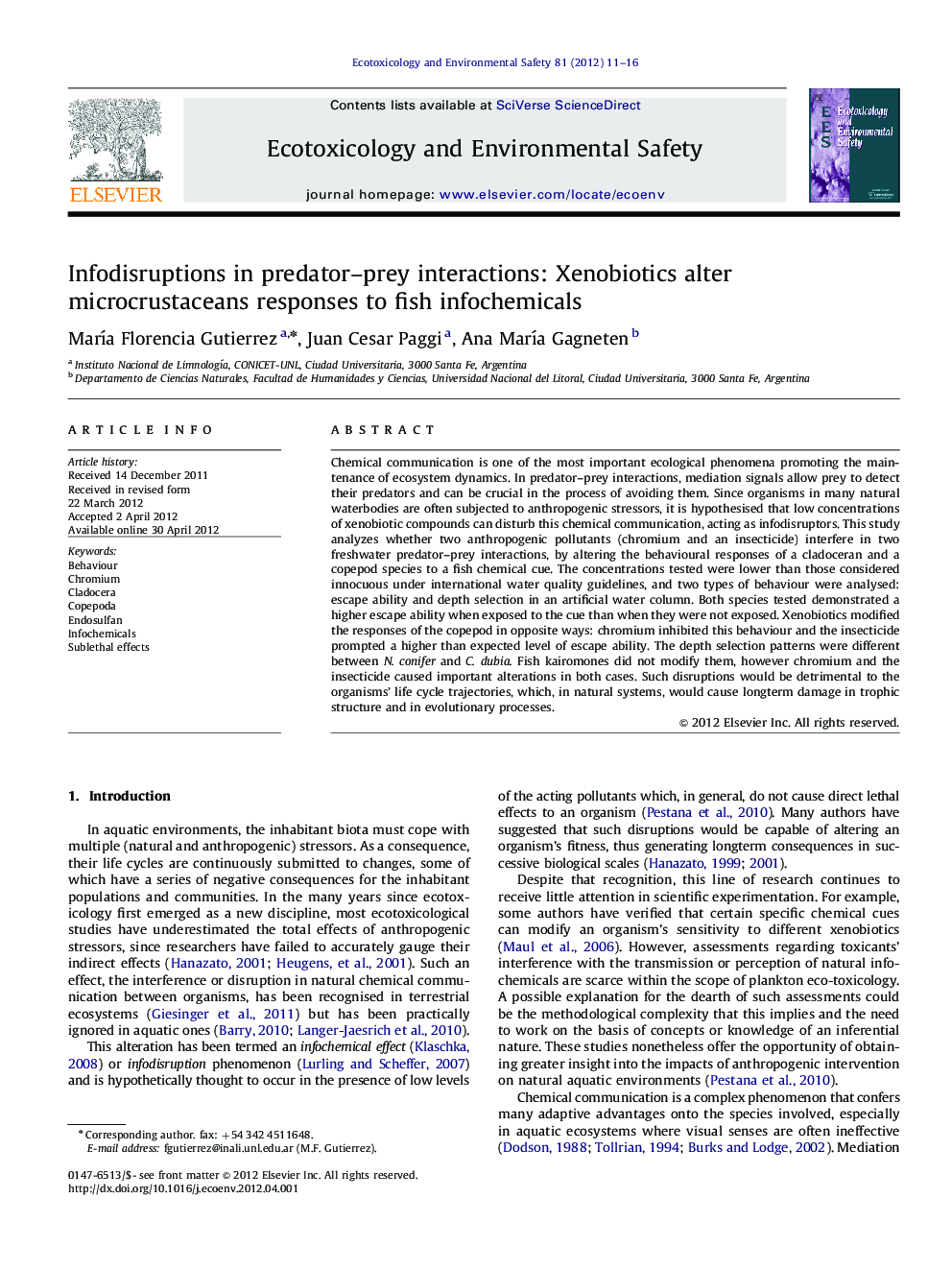| Article ID | Journal | Published Year | Pages | File Type |
|---|---|---|---|---|
| 4420634 | Ecotoxicology and Environmental Safety | 2012 | 6 Pages |
Chemical communication is one of the most important ecological phenomena promoting the maintenance of ecosystem dynamics. In predator–prey interactions, mediation signals allow prey to detect their predators and can be crucial in the process of avoiding them. Since organisms in many natural waterbodies are often subjected to anthropogenic stressors, it is hypothesised that low concentrations of xenobiotic compounds can disturb this chemical communication, acting as infodisruptors. This study analyzes whether two anthropogenic pollutants (chromium and an insecticide) interfere in two freshwater predator–prey interactions, by altering the behavioural responses of a cladoceran and a copepod species to a fish chemical cue. The concentrations tested were lower than those considered innocuous under international water quality guidelines, and two types of behaviour were analysed: escape ability and depth selection in an artificial water column. Both species tested demonstrated a higher escape ability when exposed to the cue than when they were not exposed. Xenobiotics modified the responses of the copepod in opposite ways: chromium inhibited this behaviour and the insecticide prompted a higher than expected level of escape ability. The depth selection patterns were different between N. conifer and C. dubia. Fish kairomones did not modify them, however chromium and the insecticide caused important alterations in both cases. Such disruptions would be detrimental to the organisms' life cycle trajectories, which, in natural systems, would cause longterm damage in trophic structure and in evolutionary processes.
► Microcrustaceans responses to kairomones in presence of xenobiotics. ► Low xenobiotic concentrations alter the expected escape patterns. ► In some cases, vertical migration was not only inhibited but reversed. ► Normal communication process was disrupted.
